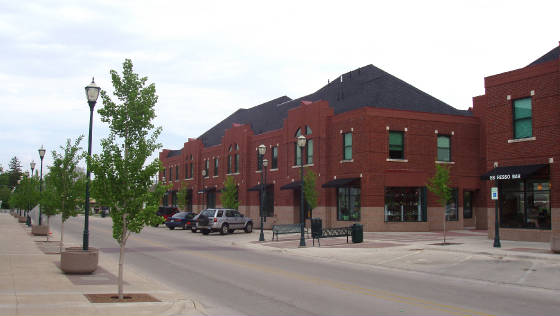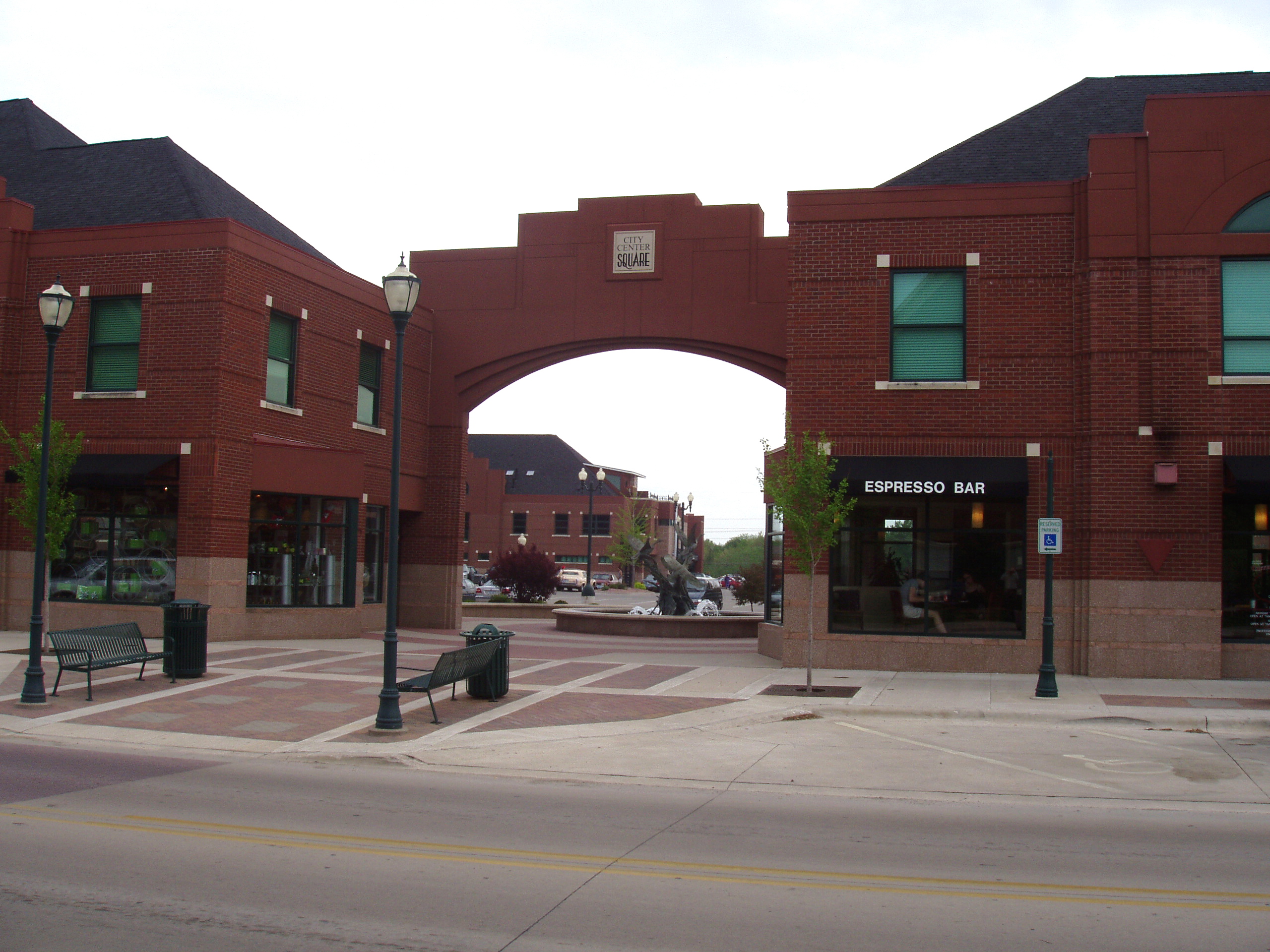|
There are many beautiful homes throughout the North America. There are also many beautiful neighborhoods. However, there
are few truly beautiful communities. Even expensive communities are spoiled by certain homes or streets that were poorly
designed or maintained.
A master planned community should be complete; it should allow people to live, work, shop, learn and play without having
to leave its boundaries. A master planned community should also allow people to do all those things in a place of beautiful
landscaping and architecture.
The streets of a typical suburb force residents to leave their attractive neighborhood in their automobile and drive a
few miles on a congested street with a row of fast food restaurants and chain stores lined up on both sides with dozens of
ugly signs competing for attention. Each business must, because of zoning laws, have its own large parking lot located in
front of the business. The street is probably not very conducive to pedestrian or bicycle traffic.
The TEN BLOCK VILLAGE PLAN is different. The PLAN envisions that a large community is developed as a series of villages,
each consisting of ten city blocks (or less according to the amount of land available and the local terrain). Each village
would have a mix of housing types. Stores, restaurants, schools, and recreational facilities are located together in an area
near the center of each village. The businesses located there would accommodate the day-to-day needs of the residents with
groceries, gasoline, and the like. Larger shopping facilities would be located in the central business district of the community
or in regional shopping areas that serve several villages.
The typical modern family is very busy. So much time is spent chauffeuring members of the family to school or work, shopping
or recreation. The parent who spends so much time driving family members here and there in our current suburbs does not have
as much time to pursue their own needs and desires. I believe that it would be much better if the modern family had suitable
alternatives to the automobile; alternatives that would also foster better health, relieve stress and be better for the environment.
There will still be residents who will drive to the village amenities, but the drive would be shorter and more convenient
in a village following the principals of the PLAN than in a suburb that did not.
The TEN BLOCK VILLAGE PLAN is designed to be friendly to pedestrians and bicycles by including a combination of sidewalks,
greenbelt trails and bicycle lanes. The maximum walking distance for residents from the farthest house to the center of the
village is nine blocks. That is a very manageable distance for many pedestrians and cyclists. Of course, most residents
would actually live much closer than the maximum nine blocks.
I am not suggesting that everyone in a village will sell their cars and use their feet for all of their transportation
needs. The TEN BLOCK VILLAGE PLAN allows for streets and parking lots to accommodate motor vehicles. The PLAN is intended
to provide alternatives to automobiles for those who want them; and a short, direct route for those who choose to use their
cars.
VILLAGE CENTER
I will not go into great detail on how to plan the village shopping area. A reader may want to read about Celebration,
Florida and Kingwood, Texas to get a different perspective on what the shopping experience could be like. Celebration and
Kingwood both have stores and businesses in an attractive setting that resembles an early 20th century "Main Street".
They also have multiunit housing either integrated with the businesses, or located nearby.
Those "Main Street" shopping areas were designed to be pleasing to the eye and functional as the same time.
Automobiles are accommodated, but not given center stage as is typical of strip malls today.
It would certainly be desirable for each village to have its own grocery store, hardware store, bank, etc. The reality
is that most new residential projects in North America have low-density housing; a low-density new village may not have enough
customers to support a grocery store. However, every village could support one convenience store and maybe a few small shops.
Residents would go to an adjacent village to shop at a large grocery store.
For more information you may want to read "Celebration, U.S.A. - LIVING IN DISNEY'S BRAVE NEW TOWN" by Douglas
Frantz and Catherine Collins 1999 Henry Holt and Company, LLC.

|
| This shopping center in Corralville, Iowa has on-street parking in front. |

|
| More parking is availble to the rear in a private lot. |
RECREATION CENTERS AND PARKS
Huge master planned communities like Irvine, CA and Kingwood, TX have numerous recreation centers scattered about for
easy access by residents. Those centers have a large swimming pool with lifeguards as their main attraction. They may also
have playgrounds, basketball courts, etc.
I suggest that each village in the PLAN have one recreation center near the center in a park-like setting. The developer
should provide enough open space at the same location to accommodate special events like concerts, festivals and the like.
In addition, I suggest that small neighborhood playgrounds be built in each quadrant of the villages. All children would
live within six blocks of a playground and would not have to cross a busy collector street to get to it. Some low-density
suburbs today are not designed for young children to safely walk to a playground or park. -- their parents must drive them
everywhere they go.
SCHOOLS AND LIBRARIES
Large planned communities may have schools located within their borders. Locate schools near the center of a village
for the convenience of students, staff, parents and visitors. A low-density Village may not have enough students to support
a middle or high school. It may be necessary to build a middle school and/or high school in one village that would accommodate
students from several villages.
The same may be true for public libraries. It would be desirable to have one library near the center of each village.
A low-density village may not have enough patrons to justify its own library.
NEXT PAGE
TOP OF PAGE
|